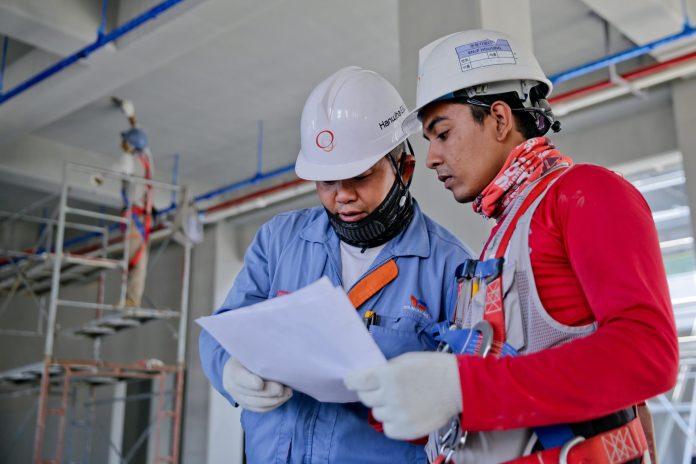Compared to a lot of the world, the “health and safety gone mad” attitude in the UK makes it seem an extremely safe country to work in. Yet, work-related injuries and poor health costs the UK economy well over £21 billion, and this figure rises year-on-year.
The financial impact of the economy more broadly is made up of the costs, and hits to productivity, of individual firms – this is what makes up the economy. Yet, despite workplace injuries costing companies millions in both direct (sick pay, broken machines) and indirect (higher employee turnover, reputational damage) costs, many still find it difficult to allocate a substantial budget towards safety.
Building your safety budget
Workplace safety budgeting is needed whether you’re putting together a business plan or you’re already up and running. While this budget will include a broad range of things, such as cost-effective safety products, a risk assessment is needed to ensure you’re being accurate with what you’ll need.
This risk assessment must be tailored to the specific operational environment. This means identifying obvious hazards, as well as quantifying the potential direct and indirect costs associated with an incident (this will also motivate you regarding safety compliance cost reduction). Direct costs are things like repairs, overtime cover and legal fees, while indirect costs (which the HSE estimates to be 8 to 36 times bigger than insured costs) include lost productivity, reputational damage, and staff turnover.
The risks identified and potential costs will be useful for calculating the small business safety ROI later on. For now, funds can be prioritised based on a matrix of risk severity and likelihood. High-risk, high-probability events need to most attention. However, it’s also important to consider value for money, meaning, purchases with a low cost yet deliver passive, ongoing risk reduction should also be exploited.
Stretching your budget
Getting the most out of your safety budget involves focusing on the more proactive, high-impact measures that have a smaller capital outlay. Continuous staff training is needed, as people themselves have a big impact on their own accidents. Nothing can replace a culture of vigilance.
Also important is the implementation of clear safety signage and equipment. These are passive measures in that they “return” a constant reduction in risk with very little ongoing resources after the initial installation. Because they’re standardised, competition has driven down its price, making it affordable safety signage easy to come by.
Scalable technology and monitoring can also be useful. Digital access control can secure high-risk areas, meaning not all staff must be trained for what’s inside. CCTV can also help with investigating accidents (this can protect you against legal action) and doesn’t cost much to install. It also acts as a deterrent for misbehaviour, which is commonly a cause of accidents.
One of the simplest, cheapest tools is simply good housekeeping. Keeping workplaces unobstructed, dry and clean helps prevent slips and falls. This can be done by simply building up a tighter culture of cleaning up after oneself, which may not incur any additional recruitment costs.
The ROI of safety
The return on investment for your safety budget may be more positive than you first think. A good example to draw from is that of Katoen Natie, a global logistics provider. The company faced high maintenance and repair costs associated with traditional steel barriers in its busy warehouses. But by investing in modern polymer safety barriers, Katoen Natie boosted employee protection and cut damage to its floors and the barriers themselves, which simply absorb and dissipate impact. The company calculated that it only took 1-2 years to get back its initial investment. From thereon, it’s a return that was profitable when considering all direct and indirect costs. In particular, a lot of the ROI was from reduced repair costs, which were a frequent expense for the firm due to buckled steel barriers. For each company, safety and environment factors will vary, meaning there’s no copy-paste blueprint to follow.
Slashing compliance costs
The UK’s health and safety regulations can be complex at times. Sometimes, you just need to stick to the guidance by industry and tick the boxes. The HSE can impose heavy fines, and these costs are easily quantified and easily avoided.
But, just doing that will lead you into a false economy of cost-cutting leading to higher long-term costs. Meticulous record-keeping of risk assessments and training sessions may seem like an administrative burden at the time, but when it comes to forecasting your potential ROI for a new safety budget, these become all-important KPIs in helping judge the amount of money you should be allocating.
Regardless of return, though, some businesses simply struggle with fronting up large amounts of capital like Katoen Natie did for their new barriers. Here, scalable measures are budget-friendly, such as hiring one additional housekeeper, conducting one more monthly training session each month, or placing a few more cheap safety signs in the right spots.



 Bitcoin
Bitcoin  Ethereum
Ethereum  Tether
Tether  XRP
XRP  Wrapped SOL
Wrapped SOL  USDC
USDC  TRON
TRON  Lido Staked Ether
Lido Staked Ether  Cardano
Cardano  Avalanche
Avalanche  Toncoin
Toncoin